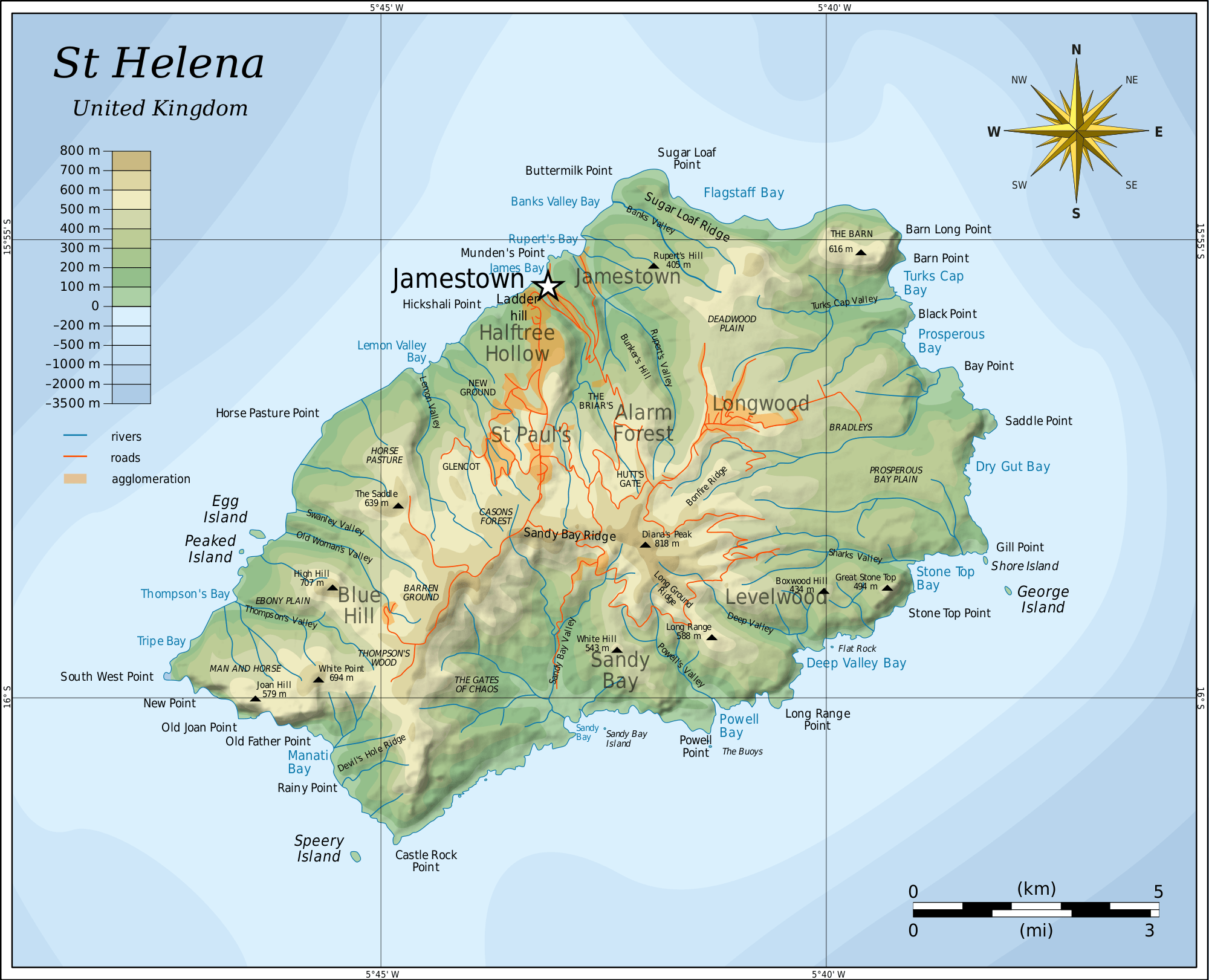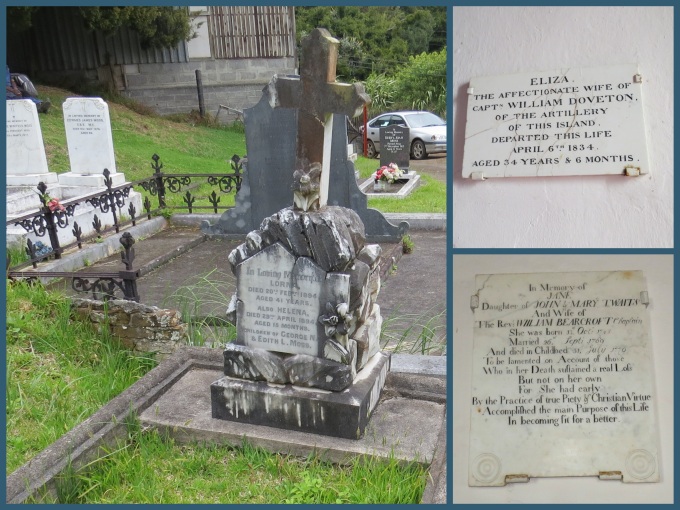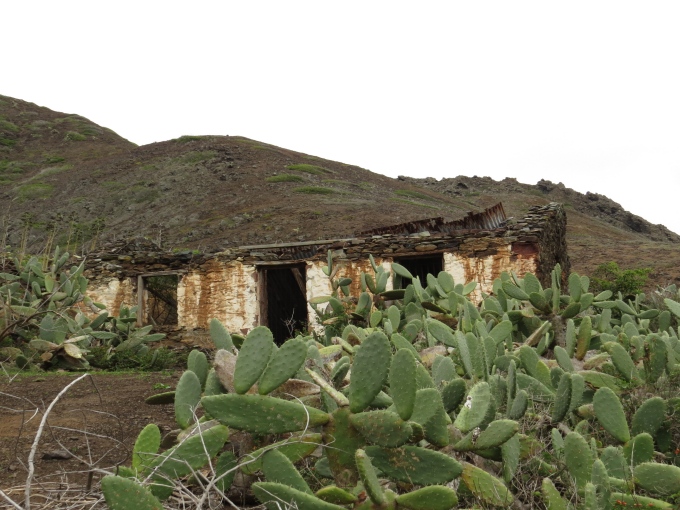Exploring St. Helena - pt. 2
/The Bellstone, Halley's Mount and Diana's Peak National Park
The days here have been warm, but mostly overcast. Sometimes in the afternoon, the sun peeks through for a few hours. When we left for Diana's Peak National Park, it was overcast here in Jamestown and by the time we climbed to the higher altitudes, it was misty, thick with low lying clouds. We opted to take a little detour down to Levelwood, on the southeast corner of the island, in hopes that the day would clear. We were in search of the Bellstone, “a trchyandesite boulder that rings (like a bell) when struck.” Hmm. We found the boulder enclosed in a little fenced area and sure enough, when David struck it with a nearby rock, its sonorous tone rung out like a bell. There are evidently more boulders like this in the area, but one was enough. The day was clearing and we headed to Diana's Peak.
As we made our way back to the national park entrance, the mist descended once again. The sun was teasing us. We saw a sign for Halley's Mount and decided to climb it. We traipsed up a grassy trail lined in flax and found the foundation of the observatory on the top of the hill. Edmond Halley was only 20 years old when he visited St. Helena Island in 1677. He was commissioned to catalogue the stars in the Southern Hemisphere in order to correct astronomical tables then in use. St. Helena offered several advantages. It was a British colony and it was far enough into the Southern Hemisphere to view the southern stars, but still close enough to the equator to view the northern stars as well. The disadvantage? Like today for us, the skies were frequently overcast so his viewing time was challenged. He observed the transit of Mercury across the sun while he was here in an effort to measure the distance of the Earth from the sun.
The sun was peeking out again as we made our way to the entrance to the national park. We could delay no longer if we wanted to make the walk. We chuckled in amazement at the cows grazing on the steep, terraced hillsides. They seemed all a-tilt, but certainly content enough as they munched away.
The road to Diana's Peak was unsurprisingly steep, narrow and winding. We parked off the road on a hillside and made our way up the Cabbage Tree Road, a broad grassy path that was wet with mist and lined with overhanging Black Cabbage trees. Yes ... the soaking mist had returned.
The trail itself was now wet and slippery in spots. Bare spots were turning muddy. Up, up, up, we tramped, switchbacking back and forth with tall, green flax lining both sides of the trail.
In days past, flax was a big industry on St. Helena and New Zealand flax was planted in every available area. The flax was harvested and processed for rope-making. The advent of nylon rope, however, killed the industry and though the flax remains, the flax harvesting has long since passed, other than for crafts.
As we trudged further and further up the hillside, we noticed a definite change in vegetation. This area of St. Helena is home to significant endemic flora and fauna. There are no snakes on St. Helena, but there are 33 species of spiders, 22 of which are endemic. Several of them live in this area and thought rare, I was not particuarly looking forward to meeting any of them...and we didn't. We did spot endemic blushing snails though. Some were mating … blushing snail bliss.
The area was green and lush, the plants making the most of this misty day. There are 50 endemic plants and ferns here. The tree ferns, in particular, reminded us of our time in New Zealand.
We continued upwards and came to a sign for Diana's Peak Road. Wood-framed dirt-filled steps aided our ascent.
The higher we climbed, the thicker the mist became. From a distance we could see Actaeon Peak, distinguished by the large Norfolk pine growing directly from its peak. This peak is also known as Cuckold's Point and we knew immediately why it had been named as such.
By the time we reached the summit of Actaeon, Diana's Peak was nowhere to be seen. It was off somewhere in the distance, but we certainly couldn't figure out where. It was getting late and we chucked it in. A great walk, but certainly not for the vistas.
As always, we were down much faster than we had climbed. It was after 3pm, but we thought we'd make a quick foray down to Blue Hill, home of the Donkey Sanctuary. For years, donkeys were the key work animal on the island and provided a means of transportation for the up-country Saints. When they were replaced by mechanized equipment and cars, they were gathered together and live now quite peacefully in a pasture area of Blue Hill. They're still used for transporting endemic plants to the High Peak in the island's efforts to restore fragile ecosystems.
Another full day on St. Helena and there was still so much to see and do. We caught the last ferry (6PM) back to Cups for dinner and a movie aboard. We needed to recuperate and be ready for another day ashore. Whew! We'll need a vacation from our vacation.



























